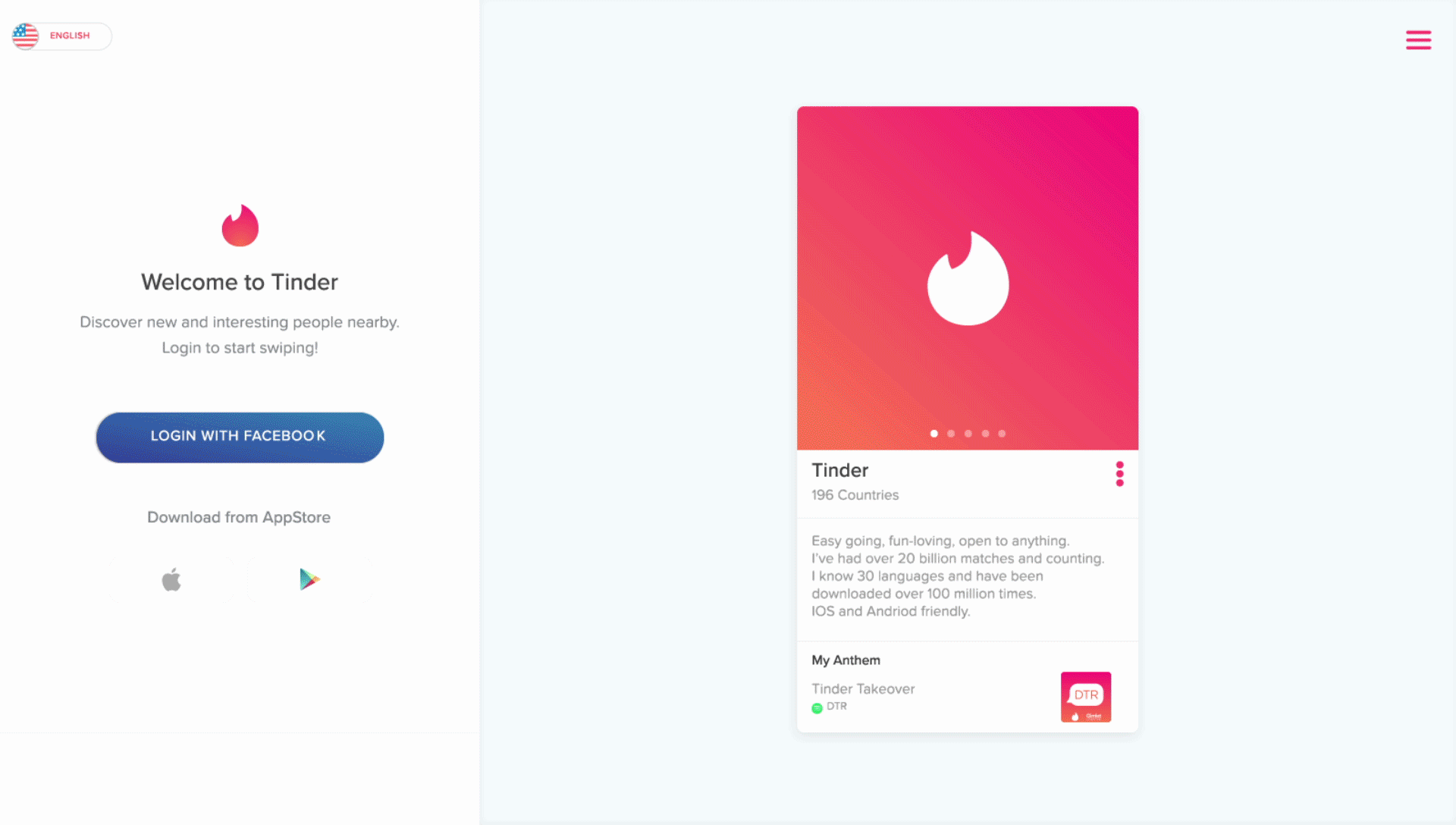Tinder has always lived on your phone. The dating app, which seduced tens of millions of users with its delightfully simple right-swipe, didn’t just have a mobile experience, it was a mobile experience. That changes today, with the release of a browser-based applet the company calls Tinder Online.
When it arrives in the US later this year (the company is now testing it in countries like Argentina, Brazil, Colombia, and Indonesia, where users with weak cellular connections will finally be able to use Tinder from a desktop), Tinder Online will look a lot like the mobile version. But the company's designers made some changes to the interface, starting with the swipe. The gesture you’re used to is gone; now, users either click and drag or tap their keyboards' arrow keys to flip through potential matches. There's also more emphasis on conversations. A message panel now fills a third of the desktop screen at all times. It's a small change with big implications: By prompting people to talk more and swipe less, Tinder Online encourages users to temper their snap judgements with some genuine connections.
Doing so means messing with Tinder's winning formula. “The ease of swiping, that’s central to its success,” says Nir Eyal, author of Hooked: How to Build Habit-Forming Products. But what comes after the swipe matters, too. To hook a person, Eyal says you need four things: trigger, action, reward, and investment. In the case of mobile Tinder, the trigger is loneliness, boredom, or your libido, and the action is the swipe. “It loads the next trigger, because when you swipe right hopefully you’ll bring a notification for a match,” Eyal says. That match is the reward (humans really like rewards), and the investment is the message you send.
Tinder Online attempts to rewrite this cycle by bringing conversations front and center. On Tinder's mobile interface, matches and messages live on different screens, which has a direct effect on how people use the app. “We see patterns of people going on swipe sprees, where they’re really engrossed in evaluating people. Then once you’ve queued up matches you take a break and have conversations,” says Samantha Stevens, the product manager for Tinder Online. Divorcing matches from messages also affects the quality of user interactions. “It’s very easy to have more generic conversations when you’re not looking at someone’s information and what they stand for,” Stevens says. This makes a non-committal "wyd" easier to fire off than a question you might ask of a person you'd like to know.
Which brings us back to the trigger-action-reward-investment cycle. With Tinder Online, the trigger is still loneliness or libido. But now, instead of going on a swiping spree, maybe you send a message. Suddenly, rather than another match, the reward is a meaningful reply; and the investment is now continuing the conversation, not just starting one. With a tweak of its user interface, Tinder could remap your trigger from a desire for more matches to a desire for more dialogue. “I wouldn’t be surprised if Tinder’s strategy here was to get people interested in longer term partnerships,” Eyal says.
That's good for Tinder's business. For all the people who turn to Tinder for superficial hookups, there are countless stories about people who found love on the app. That kind of publicity acts as testimonial for people in search of serious relationships, who might prefer sites like OkCupid or eHarmony. So far, Tinder hasn't done much to encourage that kind of seriousness---stories of married couples who met on Tinder are almost always cast as unlikely ones. But Desktop Tinder might. By weaning people off the swipe, it could nudge them into taking Tinder---and by proxy, Tinder users---a little more seriously.
